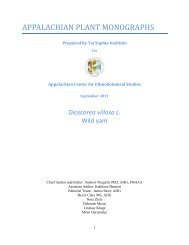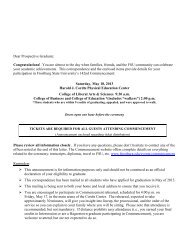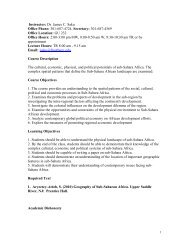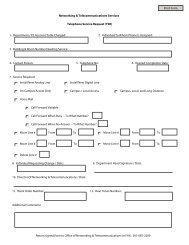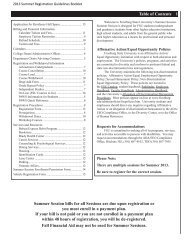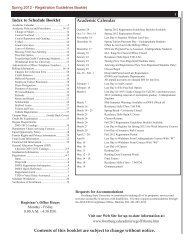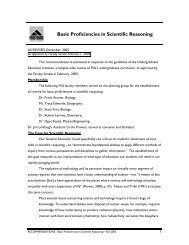Boneset – Eupatorium perfoliatum L - Frostburg State University
Boneset – Eupatorium perfoliatum L - Frostburg State University
Boneset – Eupatorium perfoliatum L - Frostburg State University
Create successful ePaper yourself
Turn your PDF publications into a flip-book with our unique Google optimized e-Paper software.
germacroanolides - and all showed antiprotozoal activity against the malaria vector<br />
Plasmodium falciparum and other protozoa (Maas,Hensel, da Costa, Brun, Keiser &<br />
Schmidt, 2011).<br />
Table 1. Classification of named sesquiterpene lactones in E. <strong>perfoliatum</strong><br />
Guaianolides Germacrolanolides<br />
Euperfolide Euperfolitin<br />
11,13 <strong>–</strong> dihydroeuperfolide Euperfolin<br />
Eufolitin<br />
Eufoliatorin (a dilactone)<br />
(Herz, Kalyanaraman, & Ramakrishnan, 1977; Maas et al., 2011)<br />
Polysaccharides<br />
Two polysaccharides have been isolated from E. <strong>perfoliatum</strong> by HPLC coupled with<br />
nuclear magnetic resonance ( 13 C NMR) spectroscopy methods (Vollmar, Schäfer, &<br />
Wagner, 1986). The two compounds were characterized as 4-0-methylglucuronoxylans,<br />
one of high molecular weight (>500,000) and a smaller one (ca 40,000), and both showed<br />
phagocytocis-enhancing activity (Vollmar, Schäfer, & Wagner, 1986).<br />
Flavonoids<br />
Methoxyflavonoids are another characteristic compound group among the <strong>Eupatorium</strong><br />
genus. Herz et al. (1972) isolated three dihydroxyflavonols from E. <strong>perfoliatum</strong> in the<br />
early 1970s, while Wagner et al. identified astragalin, hyperoside, quercetin and<br />
kaempferol (Maas, Petereit, & Hensel, , 2009). More recently four methoxylated<br />
flavonoid aglycones - eupafolin, hispidulin, patuletin and kaempferol - were identified<br />
using HPLC coupled with 1 H and 13 C NMR and mass spectroscopy (MS) (Maas et al.<br />
2011) as well as glycosides of quercetin and kaempferol (Maas et al. 2009).<br />
Phenolics<br />
Using reverse phase HPLC coupled with diode array (DAD-UV), six caffeic acid<br />
derivatives were isolated and identified by NMR spectroscopy. They were quinic acid,<br />
chlorogenic acid, neochlorogenic acid and three depsides of caffeic acid (Maas et al.<br />
2009). A chromatogram showing eight caffeic acid derivatives and four flavonoids is<br />
presented in appendix 1.<br />
5








